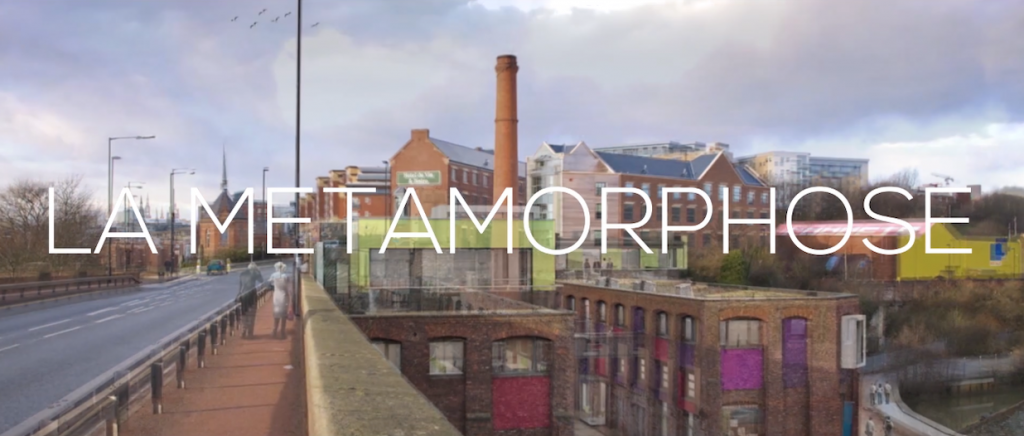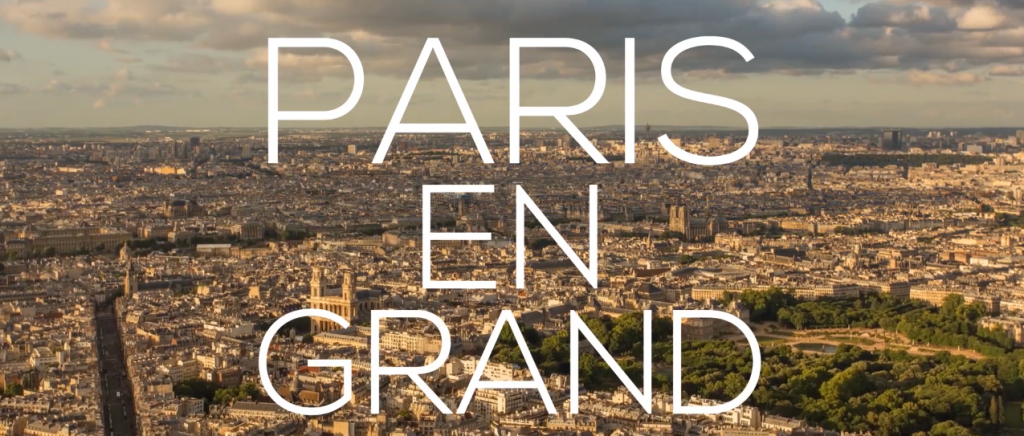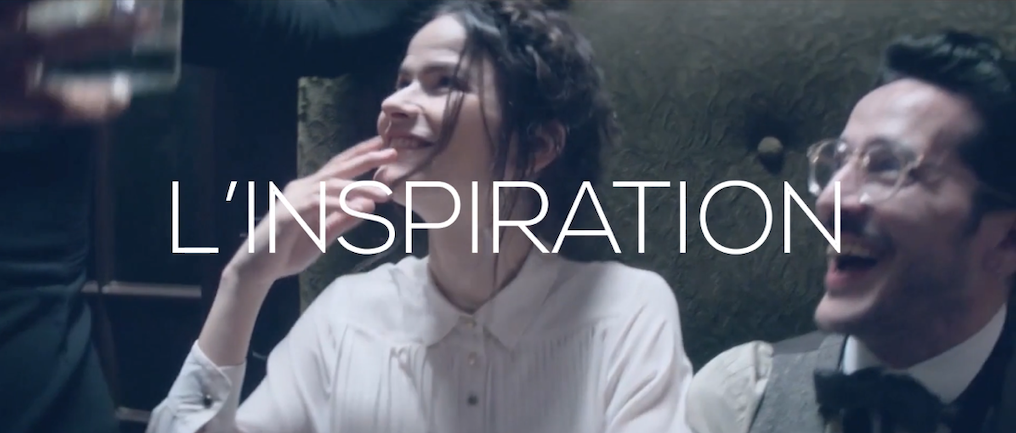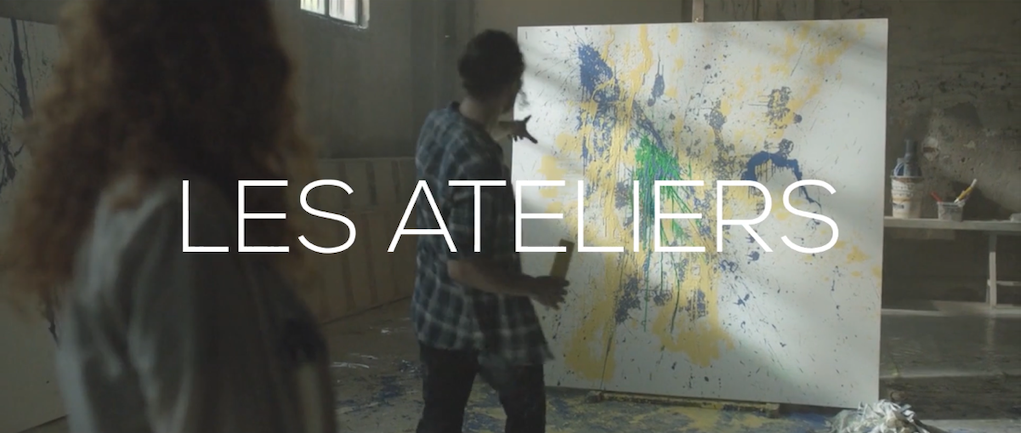While the Covid-19 crisis has exposed the major structural inequalities facing Seine-Saint-Denis, the only long-term strategy for the territory seems still to be ever more real estate speculation, ever more marginalisation and greater precariousness. A few months ago in Romainville, the property developer Fiminco inaugurated Komunuma, its latest artistic and real estate project. Based on this example, this text looks at the fabric of complicity between art and gentrification and the coloniality of language that underlies many public and private cultural initiatives beyond the ring road.

Contrary to popular opinion, most of Paris’ most interesting cultural output is already created and exhibited in the suburbs and beyond. However, such projects don’t habitually rub shoulders with a shopping complex with a 4000m2 food court. That was, until the arrival of Komunuma, a new cultural complex opened in the Paris suburb of Romainville late last year. The space is home to a cluster of Parisian galleries, the not-for-profit Jeune Création, FRAC Ile de France, Parsons School of Art and Fondation Fiminco, the latter, the eponymous foundation of the property developer bankrolling the whole project. It is situated just across the road from Le Paddock (also owned by Fiminco), a mall with a faux-villageois clock tower and a huge TV screen ominously overlooking the collective gardening project Paysan Urbain. On the eve of the 2024 Olympic Games in Paris, alarm bells start ringing to the tune of speculative property practices, gentrification and displacement in the Seine-Saint-Denis territory.

Nevertheless, the media response to Komunuma was warm, their main concern was for the welfare of the galleries marooned miles away from their habitual markets. Resistance sprang from elsewhere however. In January, the first major exhibition at Komunuma opened, the Jeune Création salon, during which participating artists read out a statement denouncing their working conditions and their opposition to having been instrumentalised in Fiminco’s gentrifying project. Collaborating with members of the collective Art en Grève Paris-Banlieues, a large banner was hung from the balcony of the ex-industrial building, it read: “Fiminco + Jeune Création = Précarité + Gentrification.” Later, in February, two artists withdrew from the exhibition A Spoonful of Sugar organised by the curatorial collective Diamètre and Jeune Création on the grounds of refusing to collaborate with a capitalist logic of the private management of public spaces.
Fiminco make no bones about their intentions. Last summer the group released a promotional video entitled Paddock Paris Gentrification, calling Pantin—the suburb sandwiched between Paris and Romainville—the “new Brooklyn”. “Cities change” whispers the sexy voiceover, “their inhabitants too.” Its threatening images of a cityscape being erased and replaced with shiny new buildings are interspersed with images of beautiful, young, mostly white people and animated maps that depict Shoreditch and Kreuzberg, illustrating gentrification’s ‘success’ stories the world over.

Romainville is likely to suffer not only under the weight of the arrival of private ventures such as Komunuma, but also from the real estate frenzy following on the heels of the 2024 Olympic Games, which is already transforming the Seine-Saint-Denis area. The neighbouring suburb of Saint Denis is set to see the greatest transformations, with the arrival of the Olympic Village comprising 2,200 homes and its very own art intervention with artistic direction from curator Gaël Charbau. However Romainville, in close proximity, is also likely to suffer from property inflation. Part of the coterie of great sporting and cultural events is the involvement of property developers, organisations and corporations who intervene in the shifts in urban planning. These take place in order to accommodate and ride the wave of such mega events, demolishing housing, building new spaces and facilities and privatising public space, facilitated by the extraordinary measures allowed by the public authorities to meet the deadlines of the Games. According to a seminal report by the UN-funded Centre on Housing Rights and Evictions, the Olympics displaced more than 2 million people around the world between 1998 and 2008 largely due to property inflation. More recent data estimates that between 70,000 and 90,000 people were displaced during the lead-up to the most recent summer games in Rio de Janeiro in 2016.

The current situation (at the time of writing, seven weeks into state-imposed lockdown under a public health emergency with a police control even more exacerbated, violent and disproportionate than usual in the suburbs) has only further revealed the gaping holes in infrastructure: adequate housing, access to healthcare, etc. Unlikely to put a halt to any kind of rabid gentrification under mega events, these revelations are only likely to add fuel to the fire of the discourse of regeneration that allows such profit-driven projects to drive ahead with little widespread criticism.

Media discourses do little to quell such ambition, they describe the banlieue as dark and dangerous, allowing projects such as Komunuma to play a saviour narrative, bringing culture, refinement and a dazzling new future to the suburbs. In Monocle Hester Underhill writes, “Far from the Marais, gallerists are settling into an edgier ’hood”, in Frieze Dorian Batycka speaks of “the city’s notorious suburbs” and with a slightly less exoticising, but nonetheless apologist tone, in Spike Ingrid Luquet-Gad claims “Komunuma marks a fresh opportunity to normalise the fascination of a certain suburb roughness as well as its opposite, a stifled, but still present, demonization and fear of the unknown.”
The latter claim addresses a limited view of the city’s boundaries, one curtailed by the ring road that draws a staunch line, both physical and psychological, between city and suburbs. It is true that this has made for an art world that remains staid and sober, entailing issues of accessibility, diversity and innovation. So in this sense, the critique is valid. However, by claiming that projects such as Komunuma will avoid the perpetual recasting of the banlieue as a grotty peripheral space, and instead promote a decentralisation of Paris’ stuffy art scene, suggests the need for corporate approbation and gentrification of the suburbs in order to traverse the ring road. It ignores the work of existing spaces such as La Galerie in Noisy-le-Sec, Les Laboratoires d’Aubervilliers, La Ferme du Buisson in Noisiel or the Maison d’Art Bernard Anthonioz in Nogent-sur-Marne, to list just a few of the already existing institutions. But worse, such narratives serve to erase the existence of the millions of people living and working beyond the city’s limits, including artists and art workers, perpetuating ideas of a terra nullius, ripe to be conquered.
In the same Spike article by Ingrid Luquet-Gad, the resident commercial galleries at Komunuma are described as “pioneers” for having set-up shop in areas of Paris proper that once held similar reputations to the suburbs—Belleville, Stalingrad, the 13th arrondissement. This colonial language is reproduced in the French media too, with an article by Emmanuelle Lequeux, Pedro Morais and Valérie de Saint-Do in Le Quotidien de l’Art tracking the perception of gallerist Thaddaeus Ropac (who opened a satellite space in neighbouring Pantin in 2012) from “figure de fou” (madman) to “pionnier.”

More insidious still is the governmental policy of “cultural democratisation” that backs this up. The term is presented as a strategy for extending “culture” to those who are alienated from it – the poor, the unemployed, the homeless, the sick, and so on – with the stated goal of emancipating them, though it is not clear from what. While on the surface such policy may appear uncontroversial, Claire Bishop in her 2012 Artificial Hells 1, describes how similar cultural policy was adopted by the New Labour government in Britain in the 1990s as a means of helping to improve the image of public bodies and creating submissive citizens who accept self-responsibility in the face of dwindling public services. Paraphrasing Paola Merli, she writes, “none of these outcomes will change or even raise consciousness of the structural conditions of people’s daily existence, it will only help people to accept them.”2 Should Macron be copying and pasting such strategy, it would come as little surprise given his precedence for enthusiastically emulating the neo-liberal Anglo-Saxon politicians of the 1990s.
The material manifestation of such cultural policy is perhaps best exemplified by theMusée numérique (digital museum) of Les Mureaux, which, according to Le Parisien, exists thanks to “Parisian museums who gift their treasures to the banlieue.” Beyond the fact that there is no such gifting going on—merely digital access to some paintings and objects—the coloniality of such language smacks once again, evoking the infamous ‘mission civilisatrice’ that underpinned the justification of colonial violence in the name of cultural provision. Whether it is a question of police control or cultural assimilation, France has never ceased to treat colonized populations as such, whether they are at the end of the world or in the heart of the metropolis. I don’t wish to denigrate the existence of mediatheques, libraries or online resources, but rather the government’s nationwide plan for these digital museums, called Micro-Folies, (A Folie being a Lustschloss or Pleasure Palace in English). The project, a technocratic creature initiated by the public establishment of La Villette, offers subventions of up to €15,000 to towns that wish to establish such a space. Micro-Folies present themselves as a turnkey solution for communities wishing to democratize culture at low cost, but they run the risk – that this cultural policy claims to eliminate through democratisation – of reinforcing the social division by perpetuating authoritarian and vertical practices that do not offer any autonomous cultural possibility worthy of the name. There is, nonetheless, a small dose of irony that current conditions have reduced even the most globe-trotting gallery attendees to digital forms of exhibition viewing, forcing everyone to face up to the insufficiency of such access to art.

The language of media and of government policy thus allows spaces like Komunuma to exist and to elide criticism on two fronts. Firstly through the supposedly benevolent notion of bringing art to the people, when really they are above all instrumentalized to carry out an art-washing of gentrification. A few examples illustrate the point: in London the Balfron Estate formerly owned by Tower Hamlets council underwent refurbishment in collaboration with the luxury property developer Londonewcastle. In the interim between transitioning from social housing to being entirely sold off (no former residents were allowed to return), artists were moved in on temporary contracts. In Marseille in 2017, seven cultural projects were given rent-free spaces for three years on the Rue du Chevalier Roze by the property developer ANF Immobilier, just one street away from new luxury apartments also owned by the group. The project, however, has largely been a failure, highlighting the fact that art in itself does not gentrify, capital does.

And there are, of course, instances of such projects in the Parisian suburbs already, the artist collective Wonder began privately renting a squat set for demolition that had been previously occupied by a group of undocumented migrants. Turfing out an existing group of residents, the space was then rented through Plateau Urbain, an organisation which capitalises on ‘transitional’ spaces, letting them out during the interim between their regeneration, allowing developers to save money on security, all while making a quick buck! And secondly by way of a narrative of the social regeneration of a neighbourhood through the notion that business taxes will be funnelled back into infrastructure from which communities will benefit from. It has been shown time and time again, however that by the time any such infrastructural improvements come around, existing communities will have been pushed out long before. The well-worn history of art washing of gentrification tells another story, one that plainly demonstrates the thin veneer of benevolence or regeneration.
Claire Bishop, Artificial Hells: Participatory Art and the Politics of Spectatorship, Londres, Verso, 2012, 390p.
Ibid. p. 14